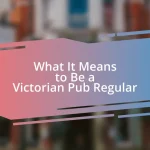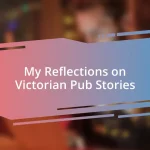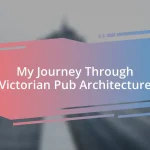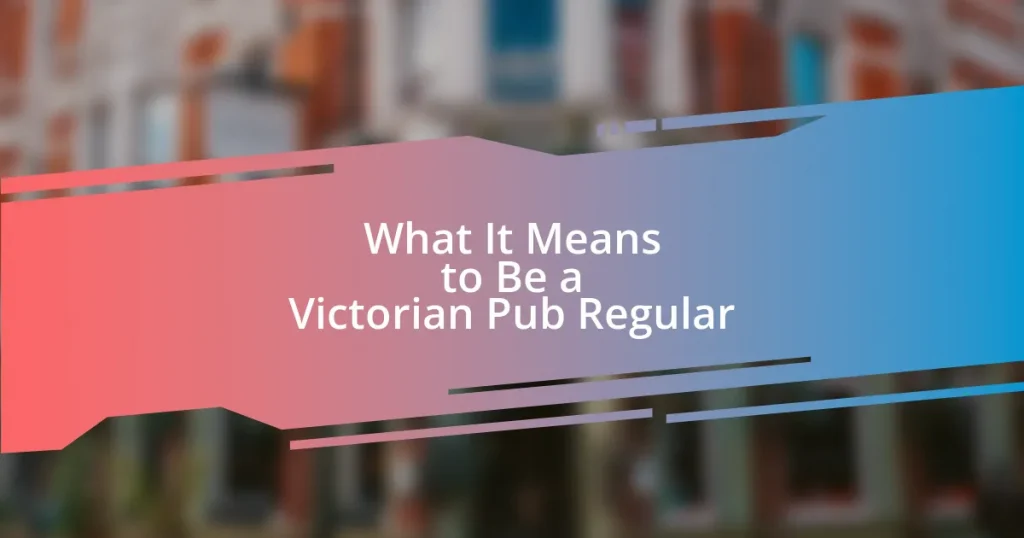Key takeaways:
- Understanding the event flow, capturing the right moments, and being observant are essential for successful event photography.
- Having versatile gear, including a reliable camera and flash, significantly impacts the quality of event photos.
- Engaging with the audience enhances the storytelling aspect and captures genuine emotions in photographs.
- Building strong client relationships through communication and personalized follow-ups fosters trust and long-term collaborations.

Understanding Event Photography Basics
Event photography is all about capturing the moment as it unfolds. I remember my first event I shot; I was overwhelmed by the energy in the room. It made me realize that understanding the flow of the event is crucial. What are the key moments I need to watch for? That’s where being present and observant comes into play.
One of the basics to grasp is the importance of lighting. I distinctly recall a wedding where the reception was dimly lit, and I struggled to get clear, vibrant shots. It taught me the value of being prepared; I should have brought a flash. So, are you equipped to handle various lighting conditions? That’s something to consider for any event.
Another component to focus on is composition. It’s fascinating how a well-composed shot can tell a story. At a recent corporate event, I adjusted my angle and framed a group of colleagues sharing a laugh, and it became one of my favorite images of the day. Isn’t it interesting how a different perspective can bring out the essence of the moment? Embracing these basic principles lays the foundation for capturing stunning visuals at any event.

Essential Gear for Event Photographers
When it comes to event photography, having the right gear can make all the difference. I remember a particularly chaotic birthday party, where it felt like I couldn’t keep up with the action. My trusty DSLR helped me snap quick shots, but I wished I had my zoom lens with me to capture the expressions from a distance without intruding. It’s essential to choose versatile equipment that suits the dynamics of the events you’ll be shooting.
Next up is the importance of a reliable flash. At my first concert shoot, I was caught off-guard by the drastic lighting changes. The images turned out grainy because I didn’t have a flash to balance the low light. I learned that a speedlight can help dramatically improve image quality, especially in dim settings, ensuring you capture the atmosphere without losing the vibrancy of the moment.
Lastly, don’t underestimate the power of a good camera bag. I once used a flimsy bag that couldn’t withstand the hustle and bustle of an outdoor festival. I nearly lost a lens when the zipper popped! Having a sturdy, well-organized bag not only protects your gear but keeps you agile, allowing you to focus on capturing those unique moments rather than worrying about your equipment.
| Gear | Description |
|---|---|
| DSLR/Mirrorless Camera | Ideal for fast-paced environments with great image quality. |
| Zoom Lens | Allows flexibility in capturing subjects at varying distances. |
| Speedlight/External Flash | Essential for low-light conditions and adds depth to images. |
| Sturdy Camera Bag | Protects gear and aids in quick, organized access. |

Techniques for Capturing Dynamic Moments
Capturing dynamic moments requires a blend of anticipation and agility. I recall a festival where a performer leaped into the crowd, and in that fleeting second, I snapped the shot that perfectly encapsulated the excitement. It’s vital to stay attuned to the environment, ready to react at a moment’s notice. That thrill of getting the shot just before it happens—it’s exhilarating!
Here are a few techniques that have worked wonders for me:
– Stay Mobile: I often find that being able to shift positions smoothly helps me catch unexpected moments.
– Use Burst Mode: This feature allows you to capture multiple frames per second, increasing your chances of getting that perfect shot mid-action.
– Focus on Emotion: Look for genuine reactions; they’re often the heart of any event. I’ve found that candid shots convey more than posed ones.
– Anticipate Action: By observing the patterns of interactions, you can be ready to click right before the action peaks.
– Experiment with Angles: Sometimes, a low angle or a higher perspective can transform a mundane moment into something spectacular.
Cultivating these techniques has made my photography not just about the images, but about capturing stories that resonate with emotion and energy.

Importance of Planning and Preparation
The importance of planning and preparation in event photography cannot be overstated. I vividly remember a wedding where I arrived early to scout the venue. This simple act allowed me to find the best spots for natural light moments, which paid off beautifully during the ceremony. How often have you felt rushed, only to find that your best shot slipped away because you weren’t in the right place?
Putting together a shot list is another effective strategy. Before a major corporate event, I sat down with the client to identify key moments they wanted me to capture. This helped me stay focused and ensured I didn’t miss any essential shots, from candid audience reactions to posed group photos. Planning gives you peace of mind and keeps you organized, allowing you to enjoy the shoot rather than stressing over what comes next.
Lastly, preparation involves checking your gear ahead of time. I learned this the hard way during a sports event when I realized my memory card was full. Fortunately, I had an extra card stashed in my bag, but it was a close call. Being proactive in managing your equipment can prevent those nerve-wracking moments, ensuring you’re ready to seize every opportunity that arises on the day of the event.

Engaging with the Event Audience
Engaging with the event audience can transform a simple photo into a cherished memory. I recall snapping away at a charity gala when I noticed a couple having a heartfelt conversation. Instead of just documenting the moment, I decided to step back and observe. Their laughter and shared smiles drew me in, allowing me to capture the essence of their connection. Isn’t it amazing how genuine interactions can tell a more profound story than any posed shot?
I make it a point to interact with attendees, weaving my way through the crowd. Sometimes, I’ll ask someone what’s brought them to the event, or what their favorite moment has been so far. This not only provides me with interesting perspectives to capture, but often leads to some of the most authentic smiles and gestures. It’s a simple technique, but it draws people in—who doesn’t like feeling noticed and appreciated?
The energy of an event can shift dramatically, and I’ve learned to ride that wave. At a recent music festival, I felt the excitement surge as the crowd anticipated the headlining act. Instead of sticking to the sidelines, I joined in the energy, snapping shots of the fans singing along and dancing wildly. Those images resonated with the vibe of the night, proving that our engagement can amplify the story we’re telling through our lens. How do you feel when you’re part of that shared excitement? It’s honest, it’s alive, and it’s what keeps me passionate about event photography.

Post-Processing Tips for Event Photos
Post-processing is where the magic truly begins for me. After capturing a vibrant concert, I remember sitting with my images, buzzing with excitement. I like to start by selecting the best shots, often those that convey emotion or tell a story. Have you ever experienced that rush when you find the perfect moment in your photos? It’s like uncovering hidden treasure, and it sets the tone for the entire editing process.
When I dive into editing, I always consider the atmosphere of the event. For instance, at a recent wedding, the soft, romantic lighting inspired me to enhance the warmth in my photos. I use tools like Lightroom for adjusting exposure and contrast, but also to play with color grading and saturation to mirror the emotion of the day. Have you ever noticed how slight color adjustments can completely transform the mood of a photograph? It’s thrilling how a small tweak can shift the narrative, don’t you think?
Lastly, I prioritize consistency across my edits. While each photo may highlight a different moment or mood, maintaining a cohesive style ensures the collection feels like a united story. At a recent conference, I used similar presets for all my images, which not only saved time but also tied together the event’s theme. This method resonates with clients and viewers alike—how do you want your work to be perceived? For me, it’s essential that every image, while unique, contributes to a seamless visual journey through the event.

Building a Strong Client Relationship
Building a strong client relationship is an art that truly enhances my work in event photography. I make it a point to meet with clients before the big day, often over a casual coffee. This isn’t just about logistics; it’s my chance to understand their vision, their stories, and what truly matters to them. Have you ever noticed how a personal connection can make both sides feel more at ease? I’ve found that these early conversations lay the groundwork for trust and creativity.
When I step onto the event floor, I already have a mental image of what my clients hope to see. I remember covering an anniversary celebration where the couple emphasized capturing candid moments with their family. I suddenly felt a sense of responsibility to preserve their precious memories. Throughout the evening, I frequently checked in with them, sharing snippets of what I was capturing. This not only reinforced our bond but also assured them that their expectations were being met. How reassuring is it to know the person behind the lens is genuinely invested in your memories?
After the event, I take the time to send a personalized thank-you note, along with sneak peeks of their photos. I’ve learned that this small gesture speaks volumes; it’s a simple way to show appreciation and keep the excitement alive. Clients often express their delight and anticipation with messages like “Wow, I can’t wait to see more!” Can you imagine how rewarding it feels to create that spark of joy? In my experience, maintaining a warm and open dialogue turns clients into long-term relationships, fostering referrals and new opportunities that benefit us both.















